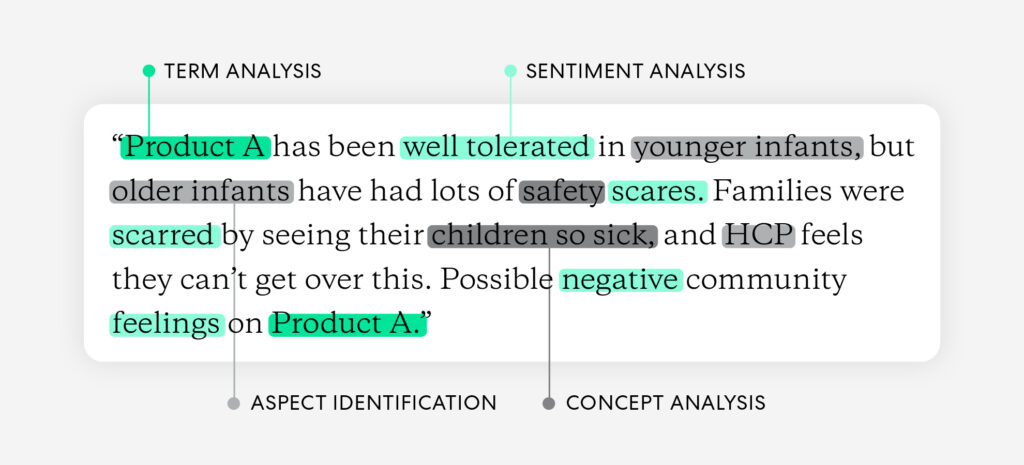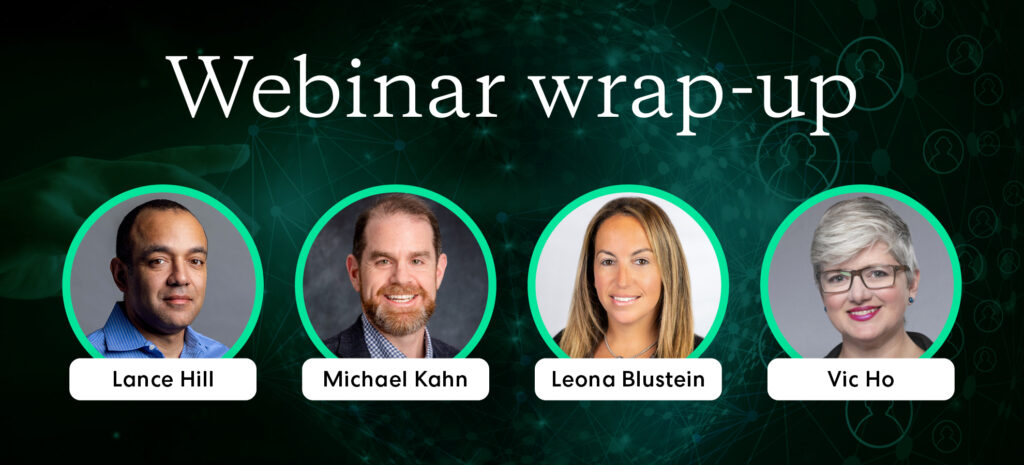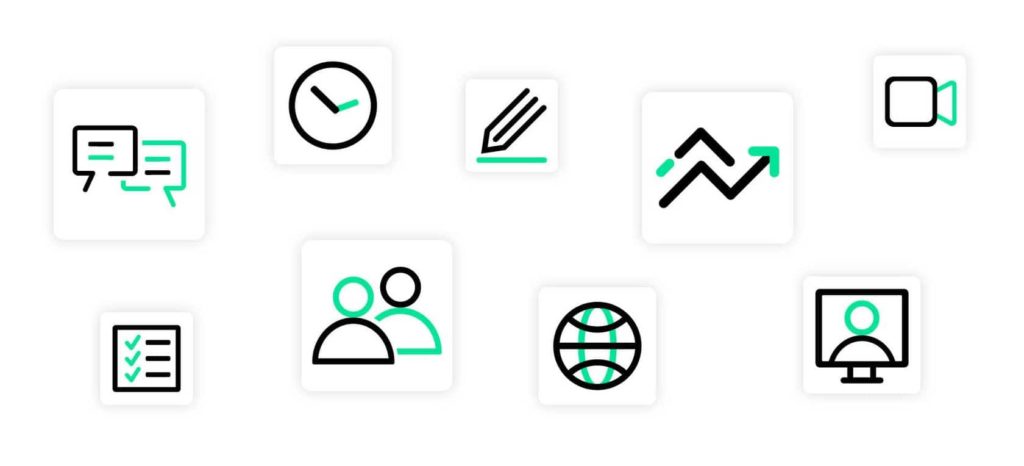From insights management platforms to telehealth services and artificial intelligence, emerging technologies are transforming the way life science companies operate. Some of these technologies have broad, far-reaching applications, whereas others have more specific – although no less powerful – uses. In this blog, we’re going to explore one of the latter technologies: natural language processing or NLP. So what is natural language processing, and what are its implications for life science?
What is natural language processing?
Natural language processing is an artificial intelligence application that analyzes conversations, documents, and interactions. It’s capable of analyzing written text or verbal speech, processing accents, mannerisms, speech patterns, and colloquialisms to get to the true meaning and intent of a conversation – just like human beings do.
“NLP combines computational linguistics – rule-based modeling of human language – with statistical, machine learning, and deep learning models. Together, these technologies enable computers to process human language in the form of text or voice data and to ‘understand’ its full meaning, complete with the speaker or writer’s intent and sentiment.”
– IBM
NLP applications have become commonplace in daily life – you might use one every day without even realizing it. The voice assistant function on your smartphone or home assistant is an example of natural language processing, as are the email filters you use to highlight topics of interest or disregard spam. NLP is used in language translation apps, digital transcription services, and autofill or predictive text functions. When coupled with machine learning, these tools can ‘learn’ human speech patterns and get better at understanding us over time. How successful and effective each of these applications is depends on how ‘smart’ the NLP algorithms are.
Sentiment analysis
“Sentiment analysis is contextual mining of text which identifies and extracts subjective information in source material, helping a business to understand the social sentiment of their brand, product, or service.”
– Towards Data Science
Sentiment analysis is a subset of natural language processing that helps NLP applications determine what a speaker or writer actually feels about a particular topic. Sentiment analysis can help you determine how social media users feel about your brand, what a group of HCPs thinks about a particular treatment approach, or how participants are responding to a clinical trial. It’s applications like this that start to transform artificial intelligence from a pure data processing tool into something that can provide tangible insights for your business.
NLP and insight gathering
“NLP offers a wide variety of use cases to uncover data for pharmaceutical and life sciences companies, including generating new information for novel drug target intelligence, biomarker discovery, safety case processing, clinical trial analytics, medical affairs insights and clinical documentation improvement.”
– Drug Discovery and Development
NLP has significant potential to add value across the life science sector, and one particularly compelling current application is in insight gathering. Medical science liaisons have dozens of interactions with HCPs and other experts over the course of a year. Spread across a whole MSL team, that’s potentially hundreds of interactions – with reports recorded in notebooks, digital documents, and in the cloud. The power of NLP is to digitize those reports in a single, centralized location, and quickly parse conversations for trends and sentiments.
An NLP application can take text from hundreds or even thousands of HCP interactions, scan those reports, and identify trending topics. They’re also far better at identifying patterns than even highly-trained individuals, so they can quickly highlight key trends that a human observer might miss. And by using sentiment analysis, NLP applications can also recognize the sentiment behind a given phrase – letting you know whether an HCP feels positive, negative, or neutral about a particular topic. Some NLP applications also provide powerful data visualizations like word clouds, which make it easier to identify the topics HCPs are talking about.
For MSL directors, NLP can deliver real, tangible insights fast – turning a process that would take countless hours into something near-instantaneous, and uncovering hidden trends and sentiments they might never have recognized on their own.
The impact of natural language processing is already being felt in the life science sector, but the true AI revolution could be just around the corner. If you’re curious about how AI is transforming the industry, read about the impact of AI on the clinical trial and drug development processes for a more detailed look at the influence of these emerging technologies.






